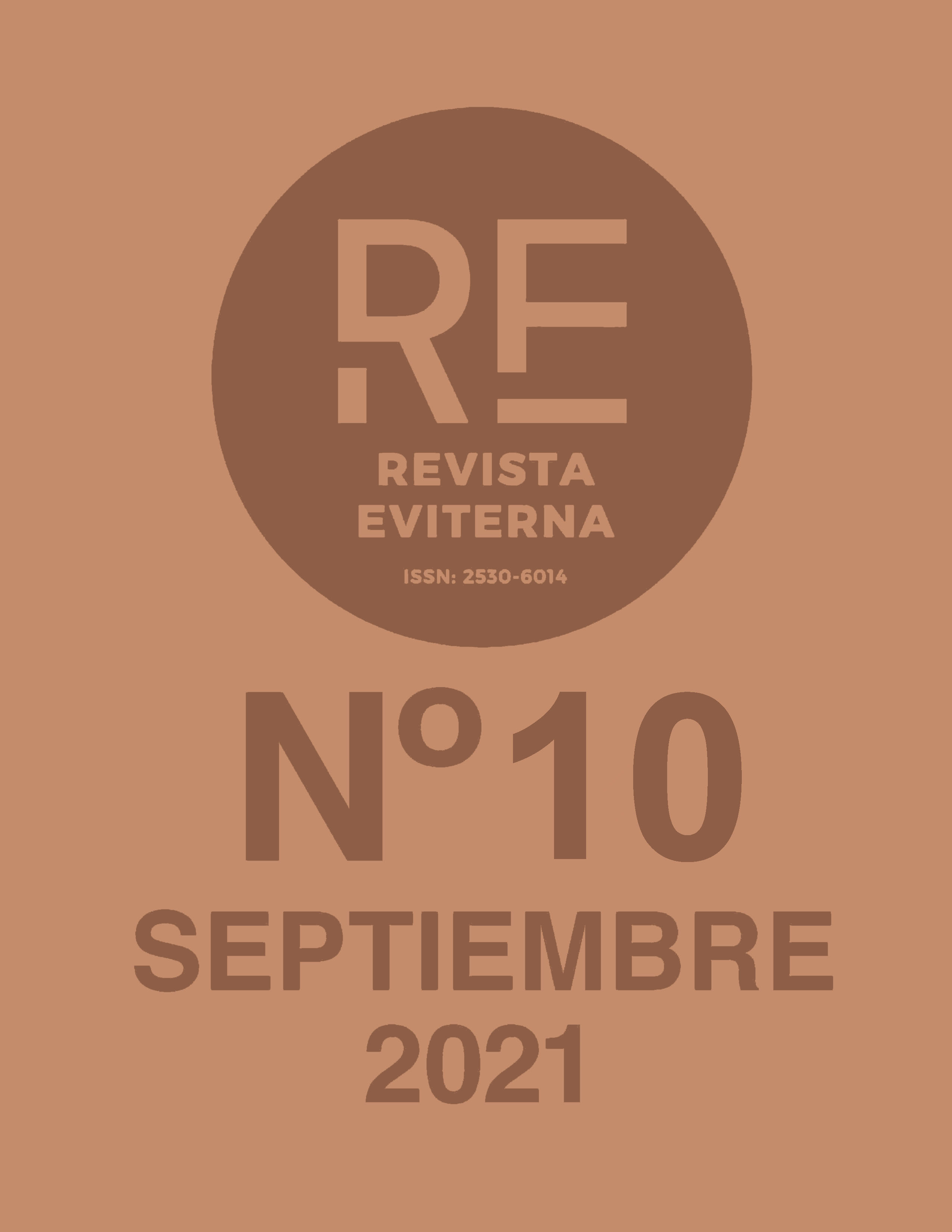Salomé del Campo
Figuración y poética
DOI:
https://doi.org/10.24310/Eviternare.vi10.12789Palabras clave:
Salomé del Campo, arte contemporáneo, Sevilla, Andalucía, siglo XXResumen
Salomé del Campo es una de las artistas contemporáneas vivas más destacadas en Andalucía. Creadora multidisciplinar, sus obras se inspiran en la historia del arte y la fotografía, logrando transmitir una inmensa carga emocional que apela a los sentimientos más recónditos del ser humano. A través de su prolífica producción pictórica y, en menor medida, escultórica y cerámica, se contempla una artista fiel a su estilo, en una constante investigación formal y temática. El presente trabajo se propone esclarecer los aspectos artísticos más significativos de la artista sevillana, estrechamente ligados al contexto cultural de la época, ya que en sus inicios se desarrolló en un ambiente social idóneo para lograr la independencia artística que le caracterizó, aunque para ello tuvo que abrirse camino paulatinamente, configurando una concepción muy personal del arte. La pintura de esta artista es de naturaleza figurativa y de factura abierta, ligera, con figuras abocetadas en muchas ocasiones. Los temas son muy variados, desde objetos, paisajes, escenas cotidianas y retratos, hasta contenidos de protesta social. Su paleta, también sufrirá varios cambios a lo largo de su carrera artística, al oscilar entre la monocromía y la amplitud de colores. Por último, la actitud de mantener una postura abierta hacia corrientes europeas y estadounidenses, sin olvidar la tradición local, hacen que las creaciones de Salomé del Campo sean innovadoras, emotivas y llenas de un envolvente carácter misterioso.
Descargas
Métricas
Publicación Facts
Perfil de revisores N/D
Información adicional autores
Indexado: {$indexList}
-
Indexado en
- Sociedad Académica/Grupo
- N/D
- Editora:
- Universidad de Málaga
Citas
AA.VV. (2017) Aplicación Murillo: Materialismo, charitas, populismo. Sevilla: Espacio Santa Clara, Sala de exposiciones Atín Aya, CICUS, Hospital de la Caridad, Hospital de los Venerables.
Aizpuru, Margarita (1998). Seis: Pilar Albarracín, Salomé del Campo, Mercedes Carbonell, Nuria Carrasco, Victoria Gil, Pepa Rubio. Sevilla: Ayuntamiento de Sevilla, Delegación de Asuntos Sociales, Consejo Municipal de la Mujer.
Centro Andaluz de Arte Contemporáneo (2021). Salomé del Campo. Noches y días. Recuperado de: http://www.caac.es/programa/salome21/frame.htm
Chacón Álvarez, José Antonio (2004). Las rutas del arte contemporáneo en Andalucía. Sevilla: Fundación José Manuel Lara.
Danvila, José Ramón (1986). Última hornada: la joven pintura andaluza. Madrid: Ediciones del Sur.
Del Campo, Salomé (2008). Coincidencias. Sevilla: Galería Weber-Lutgen.
Del Campo, S. (2019). Universidad Internacional de Andalucía. Salomé del Campo: Poética del Derribo. Recuperado de:
http://ayp.unia.es/index.php?option=com_content&task=view&id=448
Delgado, G. (1993). Equipo 57. Madrid: Museo Nacional Centro de Arte Reina Sofía.
Íñiguez, Pepe (1996). Proyecto Delft. Sevilla: Diputación Provincial.
López Moreno, L., & Villaespesa, M. (1993). 100%. Sevilla: Museo de Arte Contemporáneo de Sevilla.
Mad. Antequera (2021). Exposiciones. Recuperado de: https://madantequera.com/exposiciones/
Queralt, R., & Del Valle, G. (1996). A través del dibujo: Sevilla: Museo de Arte Contemporáneo de Sevilla.
Rojas Mix, M., & Lozano Bartolozzi, M. M. (1995). Encuentro de Mujeres Iberoamericanas en Extremadura. Badajoz: Biblioteca Pública.
Sacchetti, E., & Barbancho, J.R. (2010), Arte contemporáneo y sociedad en Andalucía. Actualidad, n º 50, p.14.
Tovar, I. (1985). Ciudad invadida. Sevilla: Centro de Arte Contemporáneo de Sevilla.
Villaespesa, Mar (1993). Múltiplo de 100. Salomé del Campo, Victoria Gil, Pepa Rubio. Sevilla: Universidad de Sevilla.
Publicado
Cómo citar
Número
Sección
Licencia
Todos los contenidos publicados en Revista Eviterna están sujetos a la licencia Creative Commons Reconocimento-NoComercia-Compartirigual 4.0 cuyo texto completo puede consultar en <http://creativecommons.org/licenses/by-nc-sa/4.0>

Se pueden copiar, usar, difundir, transmitir y exponer públicamente, siempre que:
- Se cite la autoría y la fuente original de su publicación (revista, editorial y URL de la obra).
- No se usen para fines comerciales.
- Se mencione la existencia y especificaciones de esta licencia de uso.
Los derechos de autor son de dos clases: derechos morales y derechos patrimoniales. Los derechos morales son prerrogativas perpetuas, irrenunciables, intransferibles, inalienables, inembargables e imprescriptibles.
De acuerdo con la legislación de derechos de autor, Revista Eviterna reconoce y respeta el derecho moral de los autores/as, así como la titularidad del derecho patrimonial, el cual será cedido a la Universidad de Málaga para su difusión en acceso abierto.
Los derechos patrimoniales, se refieren a los beneficios que se obtienen por el uso o divulgación de las obras. Revista Eviterna se publica en open access y queda autorizada en exclusiva para realizar u autorizar por cualquier medio el uso, distribución, divulgación, reproducción, adaptación, traducción o transformación de la obra.
Es responsabilidad de los autores/as obtener los permisos necesarios de las imágenes que están sujetas a derechos de autor.







12.png)



